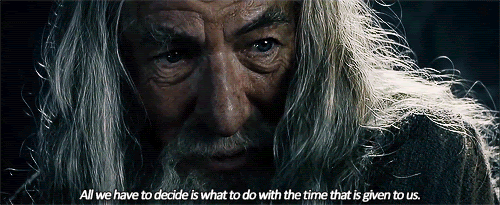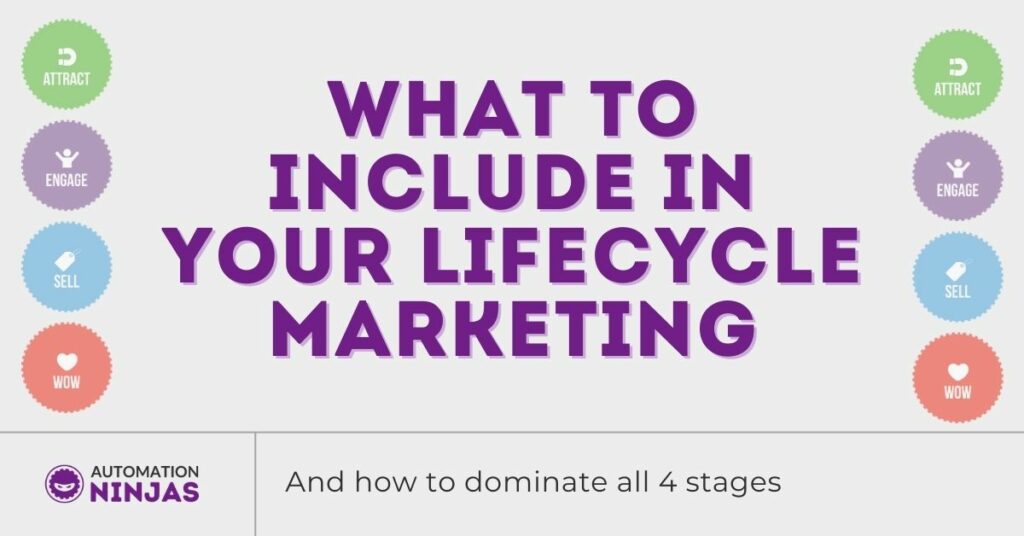AUTHOR: Kenda Macdonald
As a dedicated consultant, I specialise in elevating businesses through top-tier consultancy, fueled by a deep understanding of buyer psychology cultivated over years of experience. My expertise lies in crafting marketing and sales strategies that propel businesses to new heights by leveraging insights into the buyer brain. As a bestselling author, public speaker, and strategist, my passion for decoding human behavior drives me to innovate and deliver unparalleled results. I've designed a methodology adaptable for all types of businesses, ensuring transformative customer journeys and experiences.
So you're implementing lifecycle marketing. Well aren't you a mutha flippin gangsta?!
You're so gangsta it's entirely possible you were the person Fatboy Slim wrote Gangsta Trippin about...in 1998. Because he's also a Timelord...
Obscure pop culture references aside making the leap to use lifecyle marketing is a big deal and one you should feel very excited about.
Lifecyle marketing - what is it?
One of the biggest mistakes most people make when implementing their lifecycle marketing is that they don't actually make...well into a cycle.
Overwhelmingly most lifecycle marketing structures we see are linear not cyclical. Which is a bit silly considering it's implied in the title.
No matter how well you attract your audience or knock their socks off during delivery, if you never ever see them again then a great deal of that effort was wasted.
That's also a butt tonne of money too. In fact the more you analyse exactly what it costs you to lose a client it's a no brainer when it comes to making the extra effort to keep them.
Lifecycle marketing is all about keeping your customers - new or old - permanently engaged with your content, your products and services and consistently aware of how awesome you are at what you do.
Continually reminding your clients of said awesomeness with lots of value is a much much cheaper way of winning new business than constantly chasing down new clients.
And because it's cheaper (because the leg work has already been done) you're far more profitable as a result.
And you know what that means...

Although in reality diving into a pile of coins this dense will more than likely kill you. So...best not.
Know your lifecycle marketing
If you're not sure what lifecycle marketing is - you can check out our two very cool run downs on them here and here.
Deploying your Lifecycle Marketing Campaigns
Now we get down to the brass tacks. It's time to put up or shut up. Put your money where you mouth...
Well you get the idea.
Knowing what the phases are for, is not the same as knowing what to include. Getting it wrong can mean your various campaigns either let potential clients slip through the cracks or it falls flat and you get nothing out of it at all.
Although that's the nightmare scenario and you'd need to get it really wrong for that to happen. That said, it can still happen.
So here's what you need to include to make each of the four stages of your lifecycle marketing work like a well oiled machine.
As opposed to something out of Blood Drive.

Attract
The attract campaigns within lifecycle marketing - despite the name - needs to do more than just get people to your website.
That means taking them on a journey - which is really just a nice way of of saying you decide what they do next.
But that's okay because providing they need what you're offering, you're simply helping them get there faster. As opposed to getting lost in your site's navigation, getting bored or distracted by a squirrel.
We've all been there.
Getting the right customer to your site is only half the battle because at this juncture you don't necessarily know who they are and you definitely don't know what they need.
Using Lead Magnets to convert strangers to prospects in life cycle marketing
Lead magnets serve as a way to get your prospects to cross the anonymity threshold. Which is essentially a fancy way of finding out who they are so you can start to nurture them.
However, this isn't all about you. Yes you get their email address, but don't forget the vast majority of people are happy to give up their work email address because they don't feel the same sense of ownership as they do their personal email address.
So while you may have a means of contacting them, you haven't yet earned the right to be listened to. That's where delivering on the content you've promised really matters.
And a crappy infographic won't cut it. Don't forget you want them to trust you and you want their money. So earn that shiz.
A white paper or other document that rocks their world is where your head needs to be at. Yes it's a lot of work but get it right and that lead magnet can serve you for years. When you calculate the cost of producing it divided by the business it brings in we really are talking chump change.
But wait, there's more to lifecycle marketing
Getting their email address through delivering some epically awesome is the beginning of the attract campaign, not the end.
Now you need to start a dialogue.
The first rule of a lead magnet nurture sequence is never assume they've read what you've given them.
The second rule of a lead magnet nurture sequence is NEVER ASSUME THEY'VE READ WHAT YOU'VE GIVEN THEM.
People are lazy. This is hardly news and shouldn't come as shock to you.
At work we call it efficient with our time. Either way, build your nurture sequence working on the assumption that they either haven't read the lead magnet or have only read it partially.
Each email in your short term nurture can focus on a different part of the document which has the following benefits:
- It pushes the laggards to pull their finger out and read it. Which makes you look rad.
- You're demonstrating your in depth knowledge of your own document (validating your position as experts). Which makes you look rad.
- It gets them fired up about how you can help. Which makes you look rad.
- You open up communications by being really helpful. Which makes you look rad.
There's a theme developing here.
In short - you're taking those prospects and re-engaging clients on the beginning of their journey towards the distant land of Wow!
You're the Gandalf to their Frodo. A wise all-knowing ethereal being with an awesome beard and a gnarly stick.

It's your job to show them the right path to change their world for the better. For reals.
Engage
Engage is where things get real. Engage is all about educating and adding value to your peeps.
Very often it's the bridge between getting attention and making that sale.
That being said there are two types of Engagement:
1. Engaging your audience generally with awesome content
2. Engaging new prospects and leads for a sale
Great content provides opportunity for general relationship building
You've got to take this stuff seriously. Engaging your prospects and clients as part of a lifecycle marketing strategy is ongoing and requires detailed planning and some hard graft on your part. But get it right and you create a long term nurture that's sustainable.
The reason why it needs to be sustainable is simple: if you run out of content or the emails are sporadic you look like you don't have your shiz together and that makes you look bad.
Remember an engagement campaign is about adding consistent value. By the truck load.
Oodles of it.
This takes careful research and no small amount of planning. You can read how to create a killer content plan here.
Be under no illusion, this stuff really matters. Google search is powered by machines programmed to make assumptions that aren't always correct. Relevant content increases the accuracy of those assumptions dramatically.
A side note on time bound vs evergreen content
The challenge (on top of all the others) is ensuring that as much of your content - in addition to being super relevant and valuable - is evergreen. Meaning that it will last forever. Or at least years before it either needs to be updated or retired.
Not all content can or will be evergreen but the more you can produce the better, as it means you can provide value to prospects and clients for years, dramatically increasing the return on investment for that piece of work.
Of course some content has a shelf life and that's okay, because that's the nature of it. A big breakthrough isn't a big breakthrough in 6 months time. It's still interesting but it becomes increasingly less interesting as the world moves on.
That doesn't mean you shouldn't write about it, but accept that this is just another reason why your organisation needs to continually produce content to feed the long term nurture machine.
It's worth considering whether you write content that is time bound, or produce it for faster moving media (like social media)...
The other side of the time sensitive content is exclusive content that you deliberately make time limited. It creates a sense of urgency as well as communicating an increased sense of value. Or - for an extra twist - it's free for X number of days exclusively to your mailing list after which point it becomes chargeable.
Only do this however, if the the content is whitepaper or something else that adds serious value. Plus you have to follow through - if you say you're going to charge for it then you have to be seen to do so. People don't like to feel hoodwinked. Especially when they know you want their business and their money.
Regardless of your approach and whatever content you create, you want it to achieve two crucial things:
1. Keep you top of mind - you want your prospects and clients to be conscious of your business and how you can help them be rock stars.
2. It builds a relationship between you and the consumer. The more awesome content they read the more they trust you, and the more they come to know that yours is the organisation that can save them from the abyss they fear they are standing on the edge of.
Here is where you use all the awesome content you produce
Take the content you produce and send it to your existing list on a weekly basis. We call this a long term nurture campaign.
Use Infusionsoft or whatever marketing automation software you own to track what the prospect or client is reading.
This slightly Orwellian approach is really handy because it (a) allows you to serve that client more relevant content, helping them to identify their needs and wants faster, and (b) it allows you to market to them more effectively in the future through segmentation.
It also gives you a very clear idea of when your prospect or client is ready to be sold to...
Engaging your prospects for a sale
This is much more specific than the general content.
When you have identified that someone is interested in a specific service, now is your opportunity to take them from interest to purchase.
This is particularly important for those times when your leadmagnet follow up sequence hasn't got people all the way to parting with their hard earned cash.
Your aim here is to educate and add value through additional bits of information that will get them over the line.
It's super important that you don't just deliver the leadmagnet, pop them a few emails and then sell at them. No one likes that.
So make sure that your campaigns include an engagement phase where you genuinely add value to their lives. That's how you build strong relationships and increase conversion rates.
Sell
You've got their interest.
They've visited every webpage, read blogs, watched YouTube videos, liked you on Facebook and opened every email in every sequence you've ever sent them.
If they were any hotter they'd need a cold shower and a lie down in a dark room.
Plus, if you've done your job right you know exactly what they need because you've tracked what blogs and web pages they've visited.
The point is that if you've attracted the right kind of clients, who have challenges that you can help overcome, then you'll have a healthy pipeline of clients all at various stages of awareness and all increasingly eager to work with you.
Make your lifecycle marketing realistic
Your conversion rate isn't going to hit 100%. Not ever. Like ever ever.
Simply because over time, people will drop out because they found someone cheaper, they managed to solve the issue themselves or they went with a competitor purely because they felt the other organisation was a better fit for them.
That's fine, it happens, but the more prospects and returning clients you have in your pipeline who feel aligned with your approach and believe you can save the day, the more of them will convert.
Realistically, you don't need a big jump in conversion rate to significantly increase revenue.
But let's not get ahead of ourselves.
Do the work for your life cycle marketing to succeed
Before you get your grubby little mits on a signed sales order you have to actually sell someone something.
This is where all your diligence with the engagement component of your lifecycle marketing pays off.
You sales campaigns (note the s at the end) should be product specific. That means grouping together the clients that have expressed an interest in a product - based on their site interactions - and selling them the dream.
But don't lose sight of what you have learned. Don't go in for the hard sell! Add value!
This is your opportunity to demonstrate how profoundly you understand their challenges, their frustrations and earnestly you want to help...and how you just happen to have the solution.

As if by magic.
Except it isn't. It's science (sort of) and lots of well reasoned assumptions based on behaviour.
The point is that your prospect or client will most likely be well on their way to drawing that conclusion for themselves, but your serendipitous email will prove the nudge they needed to get in touch and give you the business.
High fives and/or fist bumps all round.
However you're not done.
Just because the client or prospect is now actively discussing a purchase with you doesn't mean you just hold out your hand.
You have the opportunity to learn about their pain points in greater detail which brings with it the opportunity to up sell, cross sell or even down sell if you think what they want isn't going to be right for them.
However only put these customers into that sales campaign cycle if you genuinely believe that what you're offering directly relates to what they want to buy, otherwise don't try it.
You'll look stupid doing it and you can sink any potential deal purely by coming across as greedy. Don't forget it really doesn't take long to shatter trust that took weeks (or months) to build.
Wow
You've got the business! Woot!
You're earning and burning. Snapping necks and cashing cheques (bonus points if you get the movie reference).
Rad.
You've delivered the work and your client is so happy with you you're receiving underwear and marriage proposals in the mail. It's a good time to be you.
This is where most people put their hands behind their head, kick back and relax.

Those people suck.
They suck because all they've done is what was promised.
Be under no illusion - the wow part of lifecycle marketing is you and your organisation doing what your nurtured, trusting, love struck client paid you to do.
That's it.
Doing your job is the minimum requirement, so if that's all you're doing right now, congrats you're scraping by on average. Less than rad.
So maybe not so much with the relaxing and a little more with the doing something to actually - you know - wow your client.
You're doing an outstanding job. That's the first item on the list, not the only thing on the list.
This is where most people forget about the lifecycle part of lifecycle marketing and then are genuinely surprised when that lovely client who looked longingly at you over conference tables now doesn't take your calls.
How do you misuse lifecycle marketing?
That's really simple - you didn't close the loop. Instead, the tail end of the Wow phase is left flapping in the wind. This really sucks because all your hard work is being consistently and systemically wasted.
That's dumb. Cut that out right goddamn now!
A really good Wow campaign will have a nurture sequence designed to keep in touch with your client as the work or service you're providing progresses.
It communicates a premium service and makes your client feel valued. It demonstrates a deeper level of commitment to your client that makes you seem special.
It also gives you an opportunity to catch any issues before they become problems which makes you attentive and gives your client the kind of service they won't want to keep quiet about.
That's pretty important for what happens later.
The other great thing about being in touch with your client on a regular basis is that it's far far easier to up sell and cross sell. The reason being - you're actively discussing their business and you're continually adding value through all your awesome content, your amazing service and your personal expert level industry knowledge.
Finally, the other great thing that allows you to do is - when the work has been done and you've genuinely wowed your client - is ask for a testimonial and a referral.
Yeah, most people hate doing them and unless you really hound them, a lot of people who agree actually won't bother. But if your client is bathing in the warm glow of a job extremely well done then why not ask for a testimonial?
Or a Google review - which are awesome for SEO - or both.
You have nothing to lose and everything to gain.
But nope, sorry, you're still not done...
Closing the lifecycle marketing loop
So you've dominated all four phases of lifecycle marketing. Awesome.
You've done everything from wooed to wowed your client. Epic.
Now what?
Now you remind yourself that what you've built is meant to be cyclical. That means you're not done because so long as your clients want to hear from you, you're never done.
Give yourself a minute to let that sink in.
This. Is. Your. Marketing. Strategy.
We have this really weird notion that - having gone to all the trouble of building an incredible relationship with our client and done an amazing job for them - that our clients won't want to hear from us ever again. Or they'll think we're being pushy. Or they wouldn't want to buy from us again.
As they old saying goes: if you never ask the answer is always no.
But no one in their right freaking mind would go in all guns blazing with the hard sell. We already know that's a terrible idea so it's a none issue.
How do you make lifecycle marketing work for you?
Think about how you won the business in the first place? All of that great content that your (then) prospect engaged with so eagerly.
Unless you're a dingus and serve them up the exact same stuff as last time, why wouldn't they want more?
Just to quickly shatter some illusions - the client may not be interested right away. They may not be interested for months.
Or they're interested but they've just funded your new helicopter so you may need to give them a little time to recover.
Either way, this isn't about putting your clients through a metaphorical mangle and squeezing them for all their worth. This is about helping them be successful so they can help you be successful.
You are to your clients as midichlorians are to Jedi. You give them their power to be awesome and/or galactic peacekeepers.
Dropping a satisfied customer back into the lifecycle is okay. You don't need to feel pushy. Mainly because your emails have that handy little unsubscribe link. If they don't want to hear from you they can very easily let you know without ever having to speak to you again.
Assuming they don't unsubscribe and they keep engaging with you, then there's potentially more business to be done which is very good news for your bottom line. Simply because existing clients are more profitable.
The more repeat or recurring revenue you can generate from your existing clients, the far healthier your business will be because you have a wealth of clients who you continually invest in and who trust you to do great things for them.
And that's awesome.
Got a specific challenge or a project you want to work on, get in touch contact a Ninja today.

Sign up to the Brainbox to stay in the loop with the latest marketing news and exclusive content
Or, if you have something specific in mind, reach out to us directly. We're all ears and ready to chat! Contact us here.


